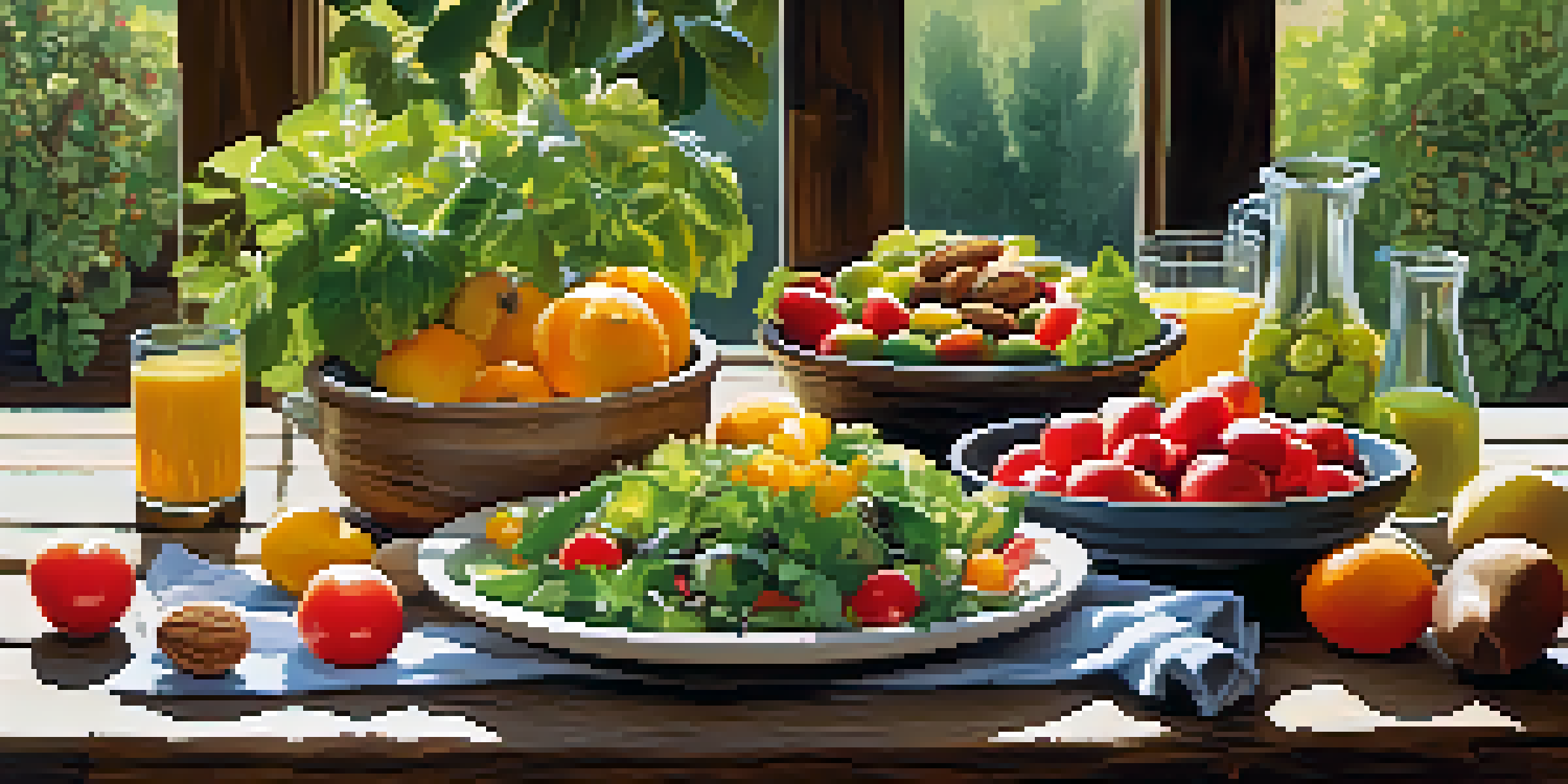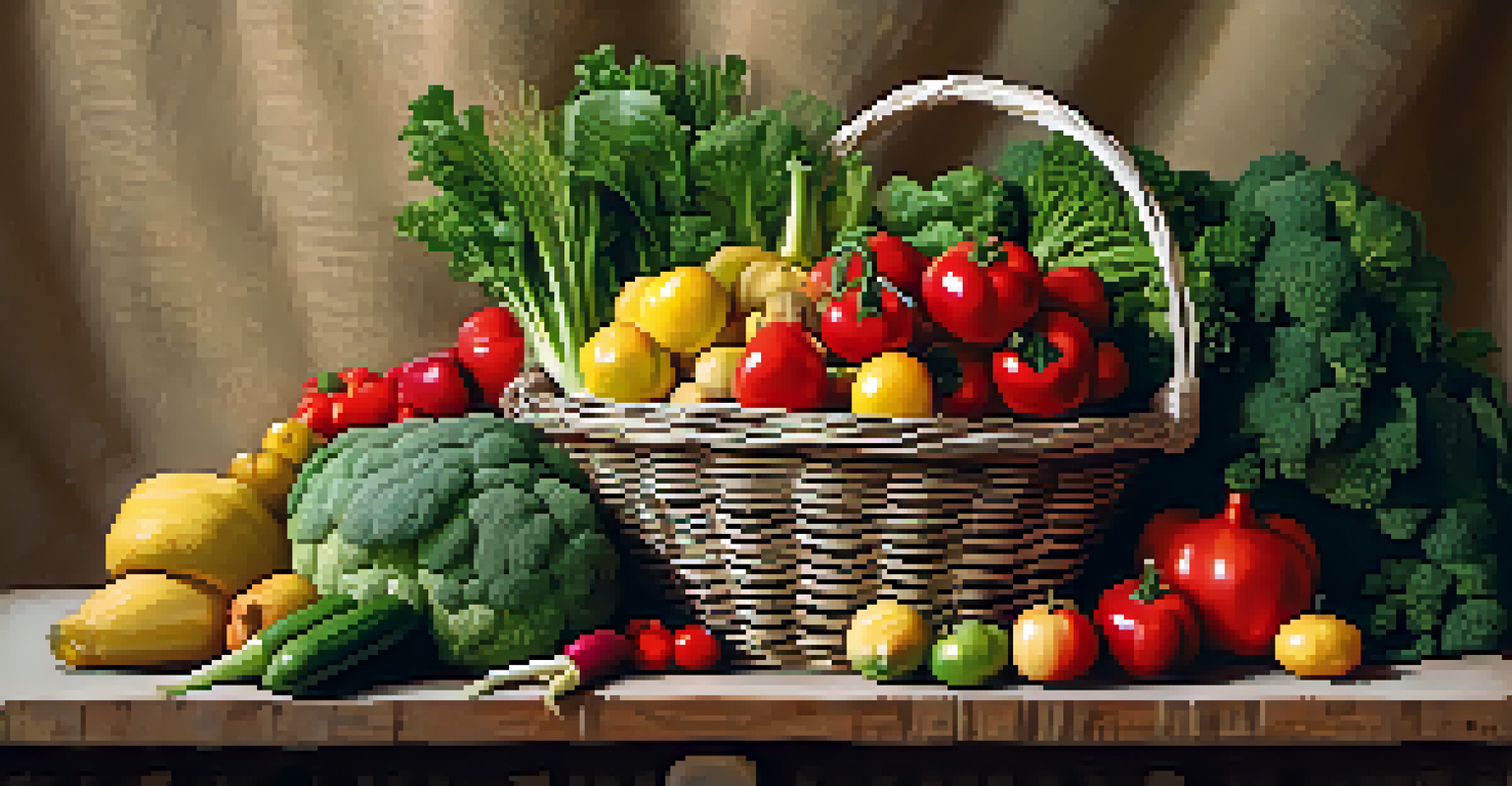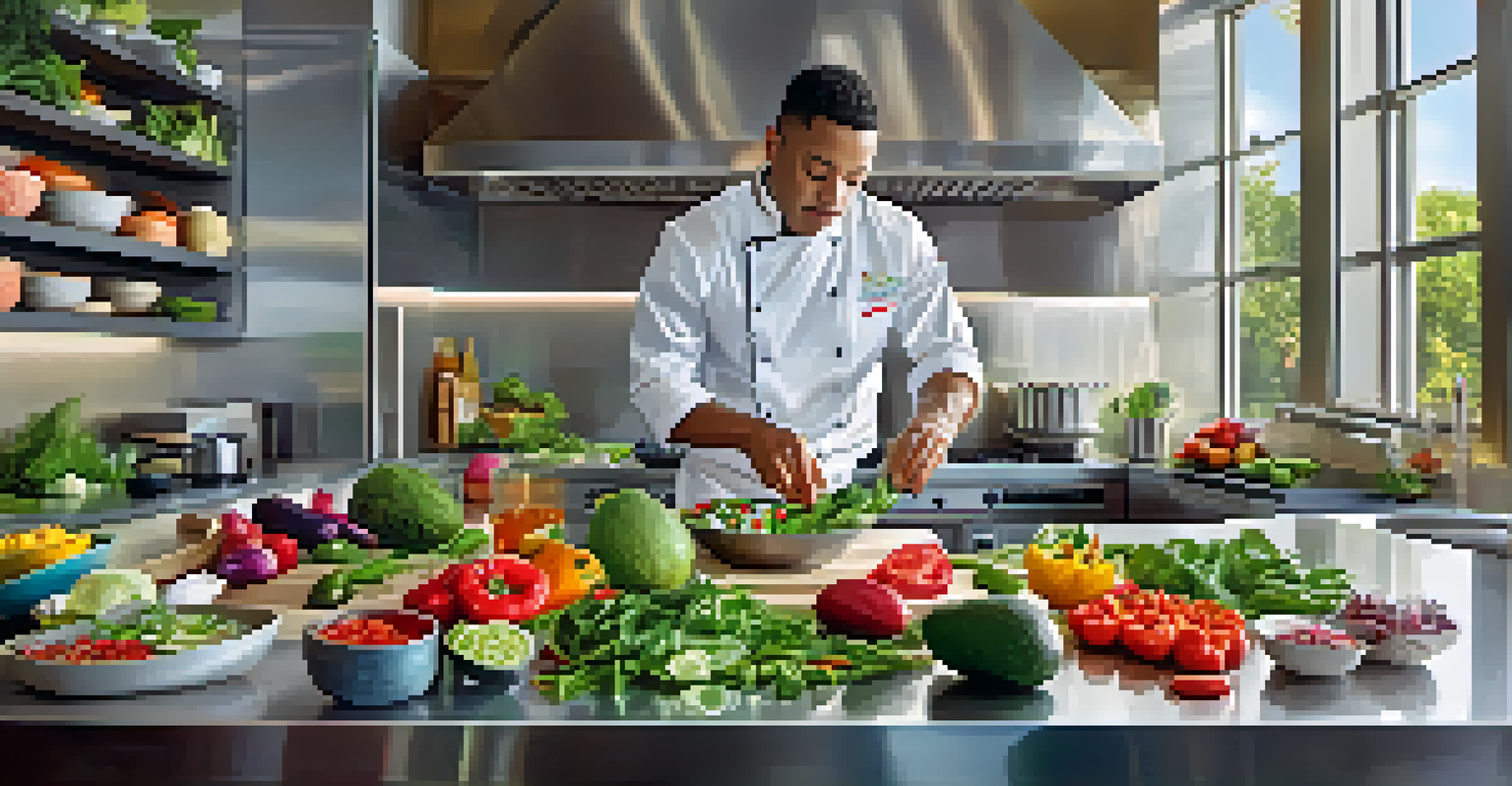Historical Perspectives on Raw Food Consumption in Europe

The Origins of Raw Food Consumption in Ancient Europe
Raw food consumption in Europe can be traced back to ancient civilizations, where fresh fruits, vegetables, and nuts were staple parts of daily diets. These early diets were largely influenced by the availability of local produce and the absence of modern cooking methods. For instance, the Greeks and Romans often enjoyed raw salads and seafood, showcasing their appreciation for fresh ingredients.
Let food be thy medicine and medicine be thy food.
In these societies, the raw food approach was not purely about health; it was also a reflection of cultural practices. Festivals celebrated the harvest, and dishes featuring uncooked foods were often central to these gatherings. This connection between food and culture laid the groundwork for a long-standing appreciation of raw ingredients in European culinary traditions.
Moreover, the ancient philosophy of 'Hippocrates' emphasized natural foods, advocating for a diet rich in raw fruits and vegetables to promote health. This early understanding of nutrition would echo through the centuries, influencing dietary practices and perceptions of raw food across Europe.
The Middle Ages: Raw Foods in a Changing Landscape
During the Middle Ages, raw food consumption experienced fluctuations due to changing agricultural practices and societal norms. With the rise of feudalism, many people relied on preserved foods, but the elite still indulged in fresh, raw delicacies during feasts. This stark contrast underscored the social divide, as access to fresh produce often depended on one's social status.

Additionally, the influence of the Catholic Church played a significant role in dietary choices. Certain periods, such as Lent, encouraged the consumption of raw vegetables and fruits as a form of penance. This religious connection not only shaped individual diets but also reinforced the idea of raw foods as wholesome and purifying.
Historical Roots of Raw Food
Raw food consumption in Europe has deep historical roots, tracing back to ancient civilizations that valued fresh produce as part of their cultural and dietary practices.
Despite the challenges of the era, raw food consumption persisted, particularly among rural communities where fresh produce was plentiful. These practices would eventually plant the seeds for a renewed interest in raw diets during the Renaissance.
The Renaissance: A Renewed Interest in Raw Foods
The Renaissance was a time of rediscovery and innovation, where art and science flourished, and so did the culinary arts. This period saw a renewed interest in fresh produce, as explorers brought back exotic fruits and vegetables from the New World. The appreciation for raw foods was evident in the vibrant salads and fresh fruit dishes that graced the tables of the wealthy.
The food you eat can either be the safest and most powerful form of medicine or the slowest form of poison.
Cookbooks began to emerge, featuring recipes that celebrated the natural flavors of raw ingredients. Renowned chefs emphasized the importance of using fresh, seasonal produce, which echoed the philosophies of ancient Greece and Rome. This culinary revival not only highlighted the aesthetic appeal of raw foods but also their nutritional benefits.
Moreover, the growing awareness of health and well-being during the Renaissance encouraged people to embrace the idea of eating raw. This shift laid the groundwork for future movements that would advocate for the health benefits of raw food consumption in Europe.
The Enlightenment: Raw Foods and Scientific Thought
The Enlightenment era brought with it a surge in scientific inquiry and a deeper understanding of nutrition. Influential thinkers began to explore the health benefits of raw foods, linking them to vitality and longevity. This period marked a shift from traditional beliefs about cooking to a more evidence-based approach to diet and health.
Prominent figures in this movement, such as Jean Anthelme Brillat-Savarin, emphasized the importance of fresh ingredients, advocating for a diet rich in raw fruits and vegetables. His writings encouraged people to appreciate the natural flavors and nutritional value of uncooked foods, further embedding raw food consumption into European culture.
Renaissance Revival of Fresh Foods
The Renaissance sparked a renewed interest in raw foods, as explorers introduced new fruits and vegetables, leading to a culinary revival that emphasized natural flavors.
As the Enlightenment progressed, the idea of eating raw became associated with a healthy lifestyle, leading to a growing interest among the middle classes. This emphasis on health and wellness laid the foundation for future dietary movements that would embrace raw food principles.
The 19th Century: Industrialization and Raw Food Trends
The 19th century was marked by rapid industrialization, which significantly altered food production and consumption in Europe. As urbanization increased, people began to rely more on processed foods, leading to a decline in raw food consumption. However, this shift also sparked a counter-movement that sought to reconnect people with natural, unprocessed foods.
Health reformers like Sylvester Graham advocated for a diet rich in whole, raw foods as a remedy for the ills of industrial society. They believed that returning to a more natural diet could combat the negative health effects associated with processed foods. This push for raw food consumption began to gain traction among health-conscious individuals.
Moreover, the emergence of vegetarianism during this time further promoted the consumption of raw fruits and vegetables. As more people sought to align their diets with ethical beliefs about animal rights and environmental sustainability, raw food consumption found a renewed sense of purpose in the 19th century.
The 20th Century: The Raw Food Movement Takes Shape
The 20th century witnessed the rise of the modern raw food movement, fueled by a growing awareness of health and nutrition. Pioneers like Dr. Ann Wigmore and her Hippocrates Health Institute popularized the concept of raw food diets, emphasizing their benefits for overall health and energy. This movement encouraged people to incorporate more raw foods into their daily meals, promoting a lifestyle centered around fresh, natural ingredients.
As interest in alternative diets grew, raw food restaurants and cafes began to emerge in urban areas across Europe. These establishments catered to health-conscious individuals looking for fresh, plant-based options. The idea of raw food as a lifestyle choice became increasingly mainstream, bridging the gap between traditional practices and modern dietary trends.
Modern Raw Food Movement Growth
Today, the raw food movement thrives in Europe, driven by increased awareness of health benefits and the influence of social media sharing vibrant raw recipes.
Additionally, the rise of health-conscious publications and media played a vital role in spreading information about the benefits of raw foods. Cookbooks, magazines, and documentaries showcased delicious raw recipes and highlighted the nutritional advantages of uncooked ingredients, further solidifying the raw food movement in European culture.
Contemporary Perspectives: Raw Food in Modern Europe
Today, raw food consumption in Europe reflects a blend of historical influences and contemporary dietary trends. Many people are increasingly aware of the health benefits associated with raw foods, such as improved digestion and increased energy levels. This awareness has led to a surge in the popularity of raw food diets, with many individuals adopting them as part of a holistic approach to health and wellness.
Moreover, the rise of social media and online communities has made it easier for people to share raw food recipes and experiences. Instagram and food blogs are filled with vibrant images of beautifully plated raw dishes, inspiring others to explore the world of uncooked foods. This digital age has created a supportive environment for the raw food movement to thrive, attracting a diverse audience.

However, it's important to note that raw food consumption is not without its challenges. Some individuals may struggle to find balance in their diets, and misconceptions about nutrition can lead to unhealthy practices. As the raw food movement continues to evolve, ongoing education and awareness will be essential to ensure that it remains a sustainable and healthful choice for people across Europe.